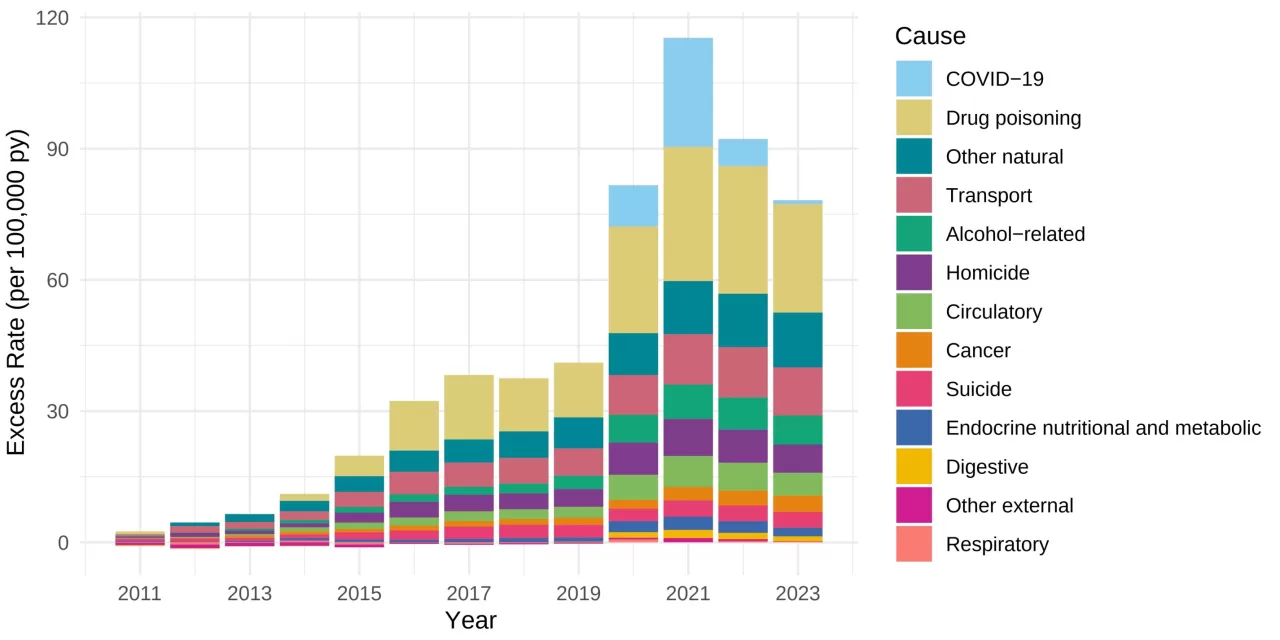New Research Highlights Concerning Trends and Calls for Policy Solutions
New research from the University of Minnesota and Boston University reveals alarming findings regarding early adult mortality in the United States. Death rates among individuals aged 25–44 surged during the COVID-19 pandemic and remain significantly higher than expected in the post-pandemic period.
The study, published in JAMA Network Open, shows that the increase in early adult mortality, which had already been rising since around 2010, worsened during the pandemic. As of 2023, death rates among early adults were approximately 70% higher than would have been predicted if trends had continued prior to the pandemic. The study analyzed death rates from 1999 to 2023, offering a comprehensive look at the causes and patterns of mortality over more than two decades.
According to researchers, the period between 2019 and 2021 saw a sharp rise in death rates, correlating with the core years of the COVID-19 pandemic. By 2023, the death rate for early adults remained nearly 20% higher than in 2019, before the pandemic began.
Contributing Factors: Drug-Related Deaths and Beyond
Drug-related deaths were identified as the leading cause of excess mortality in 2023. Specifically, opioid-related deaths continued to devastate American communities, especially those in early and middle adulthood. However, the research also highlighted a broad range of other contributing factors. Cardiometabolic diseases, circulatory issues, and nutritional causes were found to have played a significant role, alongside an increase in transport-related fatalities, such as car collisions.
Elizabeth Wrigley-Field, lead author and associate professor at the University of Minnesota, emphasized the complexity of the issue. “What we didn’t expect is how many different causes of death have really grown for these early adults,” she stated. “It’s not just drug and alcohol deaths, but also car collisions, circulatory and metabolic diseases—causes that are very different from each other. This suggests that the problem is much broader and can’t be explained by a single factor.”
The Need for Comprehensive Policy Solutions
The findings underscore the urgency of addressing the structural factors driving poor health outcomes among young adults. Andrew Stokes, co-author from Boston University, called for comprehensive policy interventions. “Our findings underscore the urgent need for policies that address the structural factors worsening health among recent generations of young adults,” said Stokes. “Solutions may include expanding access to nutritious foods, strengthening social services, and increasing regulation of industries that affect public health.”
Future research will continue to investigate the ongoing effects of the COVID-19 pandemic, as well as the trends that were already in motion before the crisis began.
Disclaimer: This article summarizes research findings from JAMA Network Open. For more detailed information, please refer to the original study: “Mortality Trends Among Early Adults in the United States, 1999-2023,” DOI: 10.1001/jamanetworkopen.2024.57538.











